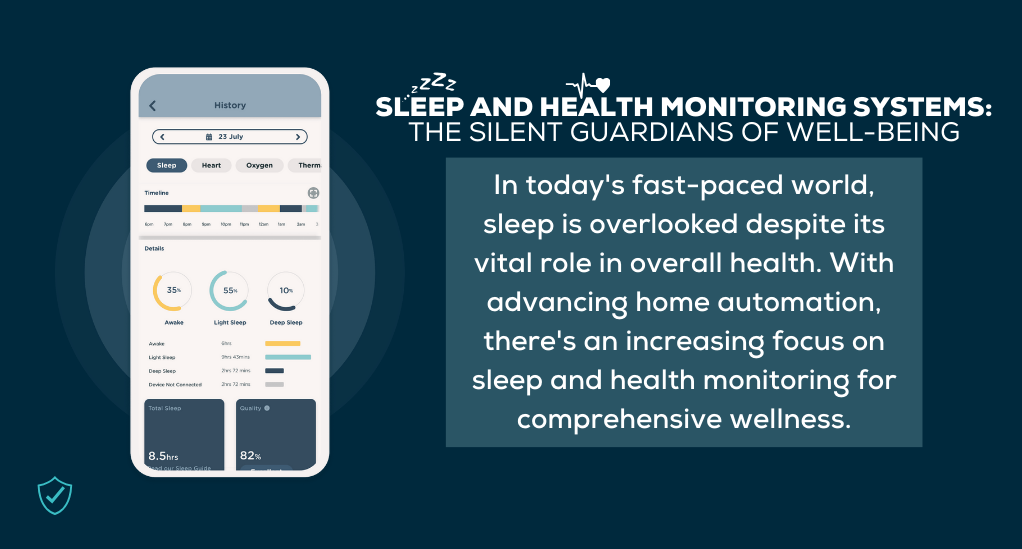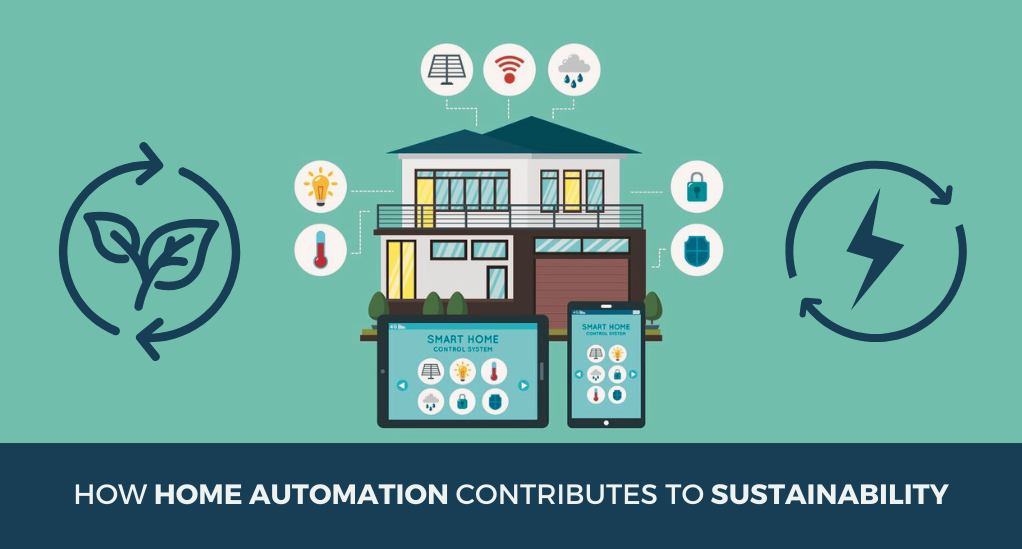
Understanding Predictions and Trends in Home Automation for the Next Decade
In the dynamic landscape of the 21st century, understanding the predictions and trends in home automation is crucial. As technology continues to evolve, smart homes are set to redefine our daily experiences, blending convenience with innovation. This article delves deep into the future of home automation, offering insights into the developments that will shape our homes in the coming decade.
The Rise and Importance of Home Automation in the 21st Century
As we navigate deeper into the 21st century, the integration of technology into our daily lives has become not just a luxury, but a necessity. The concept of a ‘smart home’ has evolved from being a futuristic idea to a present-day reality, with many households now boasting a range of interconnected devices designed to make life more convenient, efficient, and secure.
The Evolution of Home Automation
| Decade | Key Developments |
|---|---|
| 1990s | Introduction of basic home automation systems, primarily focused on security and lighting. |
| 2000s | Rise of wireless technology, leading to the development of smart thermostats, cameras, and doorbells. |
| 2010s | Integration of voice-controlled assistants like Amazon’s Alexa and Google Assistant, allowing for seamless control of various home devices. |
| 2020s | Expansion into health monitoring, energy efficiency, and increased compatibility across devices. |
The table above provides a snapshot of how home automation has progressed over the decades. What began as simple systems to control lighting or enhance security has now transformed into a holistic approach that encompasses nearly every aspect of domestic life.
Why Staying Updated Matters
With the rapid pace of technological advancements, it’s crucial for homeowners and tech enthusiasts alike to stay abreast of the latest trends in home automation. Not only does this ensure that they can make the most of the current technology, but it also prepares them for future innovations that could redefine the way we perceive and interact with our living spaces.
For instance, a homeowner who was early to adopt smart lighting systems in the 2000s would have found it easier to transition to voice-controlled systems in the 2010s. Similarly, understanding the trends of the 2020s will pave the way for smoother integration of innovations in the coming decade.
Achieving More Compatibility: Bridging the Gaps in Home Automation
The allure of home automation lies in its promise to create a seamlessly interconnected environment. However, as the industry has expanded, so too has the diversity of protocols and platforms. This diversity, while indicative of innovation, has also presented challenges, particularly when it comes to compatibility.
The Challenge of Diverse Protocols
Imagine purchasing a state-of-the-art smart bulb, only to realize it doesn’t communicate with your existing motion sensor. Or consider the frustration of having multiple apps for different devices, each with its unique interface and controls. These are real challenges faced by consumers in today’s fragmented home automation landscape.
| Device | Popular Protocols |
|---|---|
| Lighting | Zigbee, Z-Wave, Wi-Fi |
| Security | Wi-Fi, Zigbee, NFC |
| Thermostats | Wi-Fi, Zigbee, BLE |
| Speakers | Wi-Fi, Bluetooth |
The table above showcases just a fraction of the protocols in use today. With each device potentially operating on a different protocol, achieving a truly integrated smart home can seem daunting.
The Rise of Central Hubs and Gateways
To address these challenges, the industry has seen a surge in the development of central hubs and gateways. These devices act as the “brain” of the smart home, providing a unified platform through which various devices can communicate, regardless of their native protocol.
For instance, a central hub can receive a signal from a Zigbee-based motion sensor and relay a command to a Wi-Fi-based lighting system, ensuring that the two devices work in harmony.
Connected Home over IP (CHIP): A Glimpse into the Future

One of the most promising developments in this realm is the Connected Home over IP (CHIP) project. This open-source initiative, backed by industry giants like Apple, Google, and Amazon, aims to develop a standardized protocol for home automation devices.
The primary goal of CHIP is to ensure cross-platform compatibility. This means that devices from different manufacturers, operating on different platforms, can effortlessly communicate with each other. For consumers, this translates to more straightforward choices, easier setups, and a more cohesive smart home experience.
Home Automation for Remote Work: Adapting to the New Normal
The global landscape has undergone a seismic shift in recent years, with the COVID-19 pandemic acting as a catalyst for change in numerous sectors. One of the most profound transformations has been the widespread adoption of remote work. As homes have become makeshift offices, the role of home automation in facilitating a conducive work environment has become paramount.
The Changing Dynamics of Work
Before delving into the specifics of home automation for remote work, it’s essential to understand the broader context. According to a recent survey, nearly 74% of professionals expect remote work to become a standard operating procedure, even post-pandemic. This shift necessitates a reimagining of our living spaces to accommodate professional needs.
Smart Spaces for Productive Work
Creating an environment conducive to productivity requires more than just a desk and a computer. It’s about ensuring optimal lighting, maintaining the right room temperature, and minimizing distractions. Here’s where home automation comes into play:
- Adaptive Lighting: Smart lighting systems can adjust the brightness and color temperature based on the time of day, ensuring optimal illumination levels. For instance, cooler, brighter lights during the day can enhance alertness, while warmer tones in the evening can reduce eye strain.
- Climate Control: Smart thermostats can maintain the perfect room temperature, factoring in external weather conditions and personal preferences. A comfortable environment can significantly boost productivity and reduce fatigue.
- Noise Management: Smart speakers and sound systems can play ambient sounds or white noise to drown out potential distractions, especially in noisy environments.
Health Monitoring: The Unsung Hero
Beyond the immediate work environment, there’s a growing emphasis on the overall well-being of remote workers. Extended periods at home can lead to a sedentary lifestyle, with potential repercussions on physical and mental health.
- Activity Reminders: Smart wearables can remind users to take breaks, stretch, or even engage in short exercise routines.
- Mental Well-being: Voice assistants can offer guided meditation sessions, play relaxing music, or even provide reminders for regular screen breaks.
- Air Quality Monitoring: Indoor air quality can significantly impact health and cognitive function. Smart sensors can monitor parameters like humidity, temperature, and pollutant levels, ensuring a healthy indoor environment.
Sleep and Health Monitoring Systems: The Silent Guardians of Well-being

In the hustle and bustle of modern life, sleep often takes a backseat. Yet, it’s a fundamental pillar of health, with a direct impact on our physical, mental, and emotional well-being. As the realm of home automation expands, there’s a growing emphasis on integrating health monitoring systems, particularly those related to sleep, to ensure a holistic approach to wellness.
The Intricate Dance of Sleep
Sleep isn’t merely a passive state of rest. It’s a complex process involving multiple stages, each with its significance. From the light sleep stages to the deep REM (Rapid Eye Movement) phase, each segment plays a crucial role in rejuvenation, memory consolidation, and emotional regulation.
The Role of Home Automation in Sleep Monitoring
Modern smart homes are equipped with a plethora of devices designed to monitor, analyze, and enhance sleep quality:
- Smart Mattresses and Beddings: These come embedded with sensors that can track movement, heart rate, and even breathing patterns. By analyzing this data, they can provide insights into sleep cycles, disturbances, and overall sleep quality.
- Wearable Sleep Trackers: Devices like smartwatches and fitness bands offer detailed sleep analytics, tracking the duration and quality of sleep. They can detect interruptions, measure the time spent in different sleep stages, and even monitor heart rate variability.
- Environmental Sensors: Factors like room temperature, humidity, and lighting play a pivotal role in sleep quality. Smart thermostats, lighting systems, and humidity sensors can adjust these parameters to create the ideal sleep environment.
Beyond Sleep: Monitoring Mental Health
The importance of mental health has gained significant attention in recent years. Home automation devices are now equipped to detect early signs of mental health issues:
- Mood Detection: Some advanced voice assistants and smart cameras employ AI to detect changes in voice tone or facial expressions, potentially indicating mood shifts or emotional distress.
- Routine Analysis: Deviations from regular routines, like changes in activity levels, sleep patterns, or even eating habits, can be indicators of mental health challenges. Smart homes can track these deviations and provide alerts or recommendations.
- Relaxation Aids: Voice assistants can guide users through relaxation exercises, meditation sessions, or even play calming music to alleviate stress.
Sustainability and Energy Efficiency: The Green Side of Home Automation
In an era where climate change and environmental concerns are at the forefront of global discussions, the role of home automation in promoting sustainability and energy efficiency cannot be overstated. As homeowners become more conscious of their carbon footprint, smart homes are evolving to offer solutions that not only enhance convenience but also contribute to a more sustainable future.
The Environmental Impact of Homes
Homes, both in their construction and daily operations, have a significant environmental impact. From the energy consumed to heat or cool spaces to the water used in daily chores, every aspect of home life contributes to our overall carbon footprint.
How Home Automation Contributes to Sustainability

Smart homes, equipped with the latest automation technologies, can significantly reduce this environmental impact in various ways:
- Smart Thermostats: These devices can learn the occupants’ schedules and preferences, adjusting the heating or cooling accordingly. By ensuring that energy is not wasted in heating or cooling empty rooms, they can lead to substantial energy savings.
- Automated Lighting: Motion sensors can ensure lights are only on when needed, and adaptive lighting systems can adjust the brightness based on natural light availability, reducing electricity consumption.
- Water Management Systems: Smart sprinklers can water gardens at optimal times, reducing water wastage. Leak detectors can also alert homeowners to any water wastage due to leaks, ensuring prompt action.
The Economic Benefits of Sustainability
While the environmental benefits of home automation are clear, there’s also a strong economic argument to be made. Energy-efficient homes lead to reduced utility bills, and in some regions, homeowners can even receive rebates or tax benefits for implementing sustainable technologies.
The Future: Homes Powered by Renewable Energy
As the technology advances, the next frontier in sustainable home automation is the integration of renewable energy sources. Solar panels, wind turbines, and battery storage solutions are becoming more accessible to the average homeowner. Smart homes of the future might not only consume energy efficiently but also produce it, further reducing their environmental impact.
The Future of Fitness Gadgets in Home Automation: A Holistic Approach to Health
In the age of digital transformation, fitness has transcended the confines of gyms and yoga studios, making its way into our homes. With the proliferation of wearable tech and smart fitness equipment, home automation is playing a pivotal role in reshaping our approach to health and well-being.
The Rise of Smart Fitness
The past decade has witnessed an explosion in the popularity of fitness gadgets. From smartwatches that track heart rates to yoga mats that guide posture, technology is revolutionizing the way we approach physical well-being.
Integrating Fitness into Home Automation
The true potential of these gadgets is realized when they’re integrated into the broader home automation ecosystem:
- Personalized Workouts: Smart speakers and displays can guide users through tailored workout routines, adjusting based on personal goals, fitness levels, and even real-time feedback from wearable sensors.
- Dietary Guidance: Smart refrigerators and kitchen appliances can suggest meals based on dietary preferences, nutritional needs, and even the workout you’ve just completed. They can track calorie intake, suggest recipes, and even order groceries.
- Recovery and Relaxation: Post-workout recovery is crucial. Smart homes can adjust lighting and play calming music to aid relaxation. Smart mattresses can analyze sleep patterns post-exercise, ensuring optimal recovery.
Beyond Physical Health: Mental Well-being
While physical fitness is essential, mental well-being is equally crucial. Home automation devices are increasingly focusing on promoting mental health:
- Meditation and Mindfulness: Voice assistants can guide users through meditation sessions, play ambient sounds, or even offer breathing exercises.
- Mood Monitoring: Advanced systems can detect mood changes through voice tone or facial recognition, suggesting activities or interventions to boost mood.
- Social Connectivity: In an age of social distancing, smart displays and communication devices ensure we remain connected with loved ones, promoting emotional well-being.
Conclusion: Embracing the Future of Home Automation
As we approach a new decade, it’s clear that home automation is more than just a trend; it’s a transformative force redefining our daily experiences. From enhancing compatibility among devices and facilitating remote work to prioritizing holistic health, sustainability, and fitness integration, smart homes are central to this evolution. These advancements, driven by artificial intelligence, augmented reality, and an emphasis on security, promise a future where our homes not only reflect our needs but also anticipate and adapt to them.
The journey ahead is filled with innovations that will further intertwine technology with our daily lives. As we navigate this exciting landscape, our homes will play a pivotal role, ensuring we’re not just prepared for the future but actively participating in shaping it.


Leave a Reply